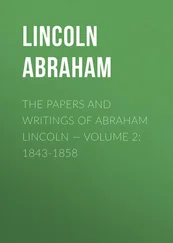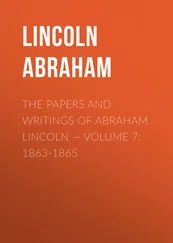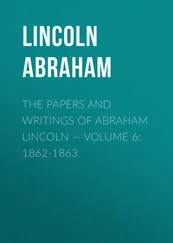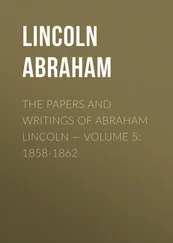Henry Fuseli - The Life and Writings of Henry Fuseli, Volume 2 (of 3)
Здесь есть возможность читать онлайн «Henry Fuseli - The Life and Writings of Henry Fuseli, Volume 2 (of 3)» — ознакомительный отрывок электронной книги совершенно бесплатно, а после прочтения отрывка купить полную версию. В некоторых случаях можно слушать аудио, скачать через торрент в формате fb2 и присутствует краткое содержание. Жанр: visual_arts, foreign_antique, foreign_prose, на английском языке. Описание произведения, (предисловие) а так же отзывы посетителей доступны на портале библиотеки ЛибКат.
- Название:The Life and Writings of Henry Fuseli, Volume 2 (of 3)
- Автор:
- Жанр:
- Год:неизвестен
- ISBN:нет данных
- Рейтинг книги:5 / 5. Голосов: 1
-
Избранное:Добавить в избранное
- Отзывы:
-
Ваша оценка:
- 100
- 1
- 2
- 3
- 4
- 5
The Life and Writings of Henry Fuseli, Volume 2 (of 3): краткое содержание, описание и аннотация
Предлагаем к чтению аннотацию, описание, краткое содержание или предисловие (зависит от того, что написал сам автор книги «The Life and Writings of Henry Fuseli, Volume 2 (of 3)»). Если вы не нашли необходимую информацию о книге — напишите в комментариях, мы постараемся отыскать её.
The Life and Writings of Henry Fuseli, Volume 2 (of 3) — читать онлайн ознакомительный отрывок
Ниже представлен текст книги, разбитый по страницам. Система сохранения места последней прочитанной страницы, позволяет с удобством читать онлайн бесплатно книгу «The Life and Writings of Henry Fuseli, Volume 2 (of 3)», без необходимости каждый раз заново искать на чём Вы остановились. Поставьте закладку, и сможете в любой момент перейти на страницу, на которой закончили чтение.
Интервал:
Закладка:
None of the ancients seem to have united or wished to combine as man and artist, more qualities seemingly incompatible than Parrhasius. – The volubility and ostentatious insolence of an Asiatic with Athenian simplicity and urbanity of manners; punctilious correctness with blandishments of handling and luxurious colour, and with sublime and pathetic conception, a fancy libidinously sportive. 15 15 The epithet which he gave to himself of Ἁβροδιαιτος, the delicate, the elegant, and the epigram he is said to have composed on himself, are known: See Athenæus, l. xii. He wore, says Ælian, Var. Hist. ix. 11. a purple robe and a golden garland; he bore a staff wound round with tendrils of gold, and his sandals were tied to his feet and ankles with golden straps. Of his easy simplicity we may judge from his dialogue with Socrates in Xenophon; ἀπομνημονευατων, 1. iii. Of his libidinous fancy, besides what Pliny says, from his Archigallus, and the Meleager and Atalanta mentioned by Suetonius in Tiberio, c. 44.
If he was not the inventor, he surely was the greatest master of allegory, supposing that he really embodied by signs universally comprehended that image of the Athenian ΔΗΜΟΣ or people, which was to combine and to express at once its contradictory qualities. Perhaps he traced the jarring branches to their source, the aboriginal moral principle of the Athenian character, which he made intuitive. This supposition alone can shed a dawn of possibility on what else appears impossible. We know that the personification of the Athenian Δημος was an object of sculpture, and that its images by Lyson and Leochares 16 16 In the portico of the Piræus by Leochares; in the hall of the Five-hundred, by Lyson; in the back portico of the Ceramicus there was a picture of Theseus, of Democracy and the Demos, by Euphranor. Pausan. Attic. i. 3. Aristolaus, according to Pliny, was a painter, 'è severissimis.'
were publicly set up; but there is no clue to decide whether they preceded or followed the conceit of Parrhasius. It was repeated by Aristolaus, the son of Pausias.
The decided forms of Parrhasius, Timanthes the Cythnian, his competitor for fame, attempted to inspire with mind and to animate with passions. No picture of antiquity is more celebrated than his immolation of Iphigenia in Aulis, painted, as Quintilian informs us, in contest with Colotes of Teos, a painter and sculptor from the school of Phidias; crowned with victory at its rival exhibition, and since, the theme of unlimited praise from the orators and historians of antiquity, though the solidity or justice of their praise relatively to our art, has been questioned by modern criticism. On this subject, which not only contains the gradations of affection from the most remote to the closest link of humanity, but appears to me to offer the fairest specimen of the limits which the theory of the ancients had prescribed to the expression of pathos, I think it my duty the more circumstantially to expatiate, as the censure passed on the method of Timanthes, has been sanctioned by the highest authority in matters of art, that of your late President, in his eighth discourse at the delivery of the academic prize for the best picture painted from this very subject.
How did Timanthes treat it? Iphigenia, the victim ordained by the oracle to be offered for the success of the Greek expedition against Troy, was represented standing ready for immolation at the altar, the priest, the instruments of death at her side; and around her, an assembly of the most important agents or witnesses of the terrible solemnity, from Ulysses, who had disengaged her from the embraces of her mother at Mycenæ, to her nearest male relations, her uncle Menelaus, and her own father, Agamemnon. Timanthes, say Pliny and Quintilian with surprising similarity of phrase, when, in gradation he had consumed every image of grief within the reach of art, from the unhappy priest, to the deeper grief of Ulysses, and from that to the pangs of kindred sympathy in Menelaus, unable to express with dignity the father's woe, threw a veil, or if you will, a mantle over his face. – This mantle, the pivot of objection, indiscriminately borrowed, as might easily be supposed, by all the concurrents for the prize, gave rise to the following series of criticisms:
"Before I conclude, I cannot avoid making one observation on the pictures now before us. I have observed, that every candidate has copied the celebrated invention of Timanthes in hiding the face of Agamemnon in his mantle; indeed such lavish encomiums have been bestowed on this thought, and that too by men of the highest character in critical knowledge, – Cicero, Quintilian, Valerius Maximus, and Pliny, – and have been since re-echoed by almost every modern that has written on the Arts, that your adopting it can neither be wondered at, nor blamed. It appears now to be so much connected with the subject, that the spectator would perhaps be disappointed in not finding united in the picture what he always united in his mind, and considered as indispensably belonging to the subject. But it may be observed, that those who praise this circumstance were not painters. They use it as an illustration only of their own art; it served their purpose, and it was certainly not their business to enter into the objections that lie against it in another Art. I fear we have but very scanty means of exciting those powers over the imagination, which make so very considerable and refined a part of poetry. It is a doubt with me, whether we should even make the attempt. The chief, if not the only occasion which the painter has for this artifice, is, when the subject is improper to be more fully represented, either for the sake of decency, or to avoid what would be disagreeable to be seen; and this is not to raise or increase the passions, which is the reason that is given for this practice, but on the contrary to diminish their effect.
"Mr. Falconet has observed, in a note on this passage in his translation of Pliny, that the circumstance of covering the face of Agamemnon was probably not in consequence of any fine imagination of the painter, – which he considers as a discovery of the critics, – but merely copied from the description of the sacrifice, as it is found in Euripides.
"The words from which the picture is supposed to be taken, are these: Agamemnon saw Iphigenia advance towards the fatal altar; he groaned, he turned aside his head, he shed tears, and covered his face with his robe .
"Falconet does not at all acquiesce in the praise that is bestowed on Timanthes; not only because it is not his invention, but because he thinks meanly of this trick of concealing, except in instances of blood, where the objects would be too horrible to be seen; but, says he, 'in an afflicted Father, in a King, in Agamemnon, you, who are a painter, conceal from me the most interesting circumstance, and then put me off with sophistry and a veil. You are (he adds) a feeble painter, without resources: you do not know even those of your Art. I care not what veil it is, whether closed hands, arms raised, or any other action that conceals from me the countenance of the Hero. You think of veiling Agamemnon; you have unveiled your own ignorance.'
"To what Falconet has said, we may add, that supposing this method of leaving the expression of grief to the imagination, to be, as it was thought to be, the invention of the painter, and that it deserves all the praise that has been given it, still it is a trick that will serve but once; whoever does it a second time, will not only want novelty, but be justly suspected of using artifice to evade difficulties.
"If difficulties overcome make a great part of the merit of Art, difficulties evaded can deserve but little commendation."
To this string of animadversions, I subjoin with diffidence the following observations:
Читать дальшеИнтервал:
Закладка:
Похожие книги на «The Life and Writings of Henry Fuseli, Volume 2 (of 3)»
Представляем Вашему вниманию похожие книги на «The Life and Writings of Henry Fuseli, Volume 2 (of 3)» списком для выбора. Мы отобрали схожую по названию и смыслу литературу в надежде предоставить читателям больше вариантов отыскать новые, интересные, ещё непрочитанные произведения.
Обсуждение, отзывы о книге «The Life and Writings of Henry Fuseli, Volume 2 (of 3)» и просто собственные мнения читателей. Оставьте ваши комментарии, напишите, что Вы думаете о произведении, его смысле или главных героях. Укажите что конкретно понравилось, а что нет, и почему Вы так считаете.












